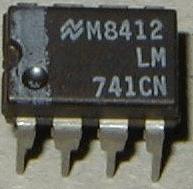The fact that we need a subwoofer means that something is missing in the performance of the main speakers. This is not surprising, since the speakers unfortunately have to coexist with families, women and companions, leading to the inevitable Compact, stand-mounted speaker. Modern, compact speakers are excellent performances, but there is no further away from the laws of physics, small box = bad bass. So, modern speakers designed for a response in the low-limit?
User isobaric subwoofer on the Altec Lansing FX4021 and FX5051
4th isobaric subwoofer box design
The subwoofer is a bit of a word misnomer. It includes sub-audio course can not hear you. We mean really low sound. This does not mean we can not "collect" the sub-audio frequencies. The body can not perform under the form of audio-frequency vibrations and can strengthen the reality of the listening experience. There is usually little more low audio below 20Hz in most of the music.
The only (not electronic), an instrument can produce something in this Church is the body 16.67Hz. Even if this body is equipped with the solid pipe is usually filled with something to prevent the building collapsing around!
For practical reasons we can arrange to 20Hz as the lowest audio frequency that we want to reproduce, may be less than that, the boxes are often quite large. OK. So who determines the lowest frequency we want the subwoofer to handle, but what about the highest frequency?
It is easy to match the response of the existing speakers.
In my case, my speakers are-3dB at 47Hz. That is a lot better than most small speakers, 70-80Hz at-3dB is fairly typical. Ideally the subwoofer to be on the same-3dB frequency. It is easy acheivable a low-pass electronic filter. These can easily be made adjustable to fit almost all existing stakeholders.
Why only one subwoofer, we have two for stereo? The answer to this depends on how the human ear perceives direction. The brains very carefully compares the phase of sounds in the left ear or right and take a decision on this basis.
At high frequencies, the distance between the ears is an important part of the wavelength and the phase difference is large. Because the frequency is reduced, the distance between the ears small compared to the wavelength.
The phase difference is reduced making it difficult for the brains towards the sound calculates. It is not by any means the whole story, the ears also use the level difference and the slight head movements to better determine the direction. Below 200Hz, the human auditory system is almost fully able to determine direction, so it does not matter if the bass is in stereo, mono or even in the room where it originated.
Thus, a subwoofer is all you need. It is normal that the sum of the left and right channels within the subwoofer, so no information is lost. Joint Stereo is often used in the MP3 coding scheme. The low frequencies are encoded in mono, stereo at higher frequencies.
I have several cheap 180 mm / 6.5 "drives and carefully measured their parameters. This step is crucial in this kind of design that even small errors affect the frequency response drastically.
I used my speaker
WinISD and added to the database to track the response and the size of the box to calculate. Compromises are necessary in this kind of design. You can find a good performance and a very narrow bandwidth or poor performance and a wider bandwidth. What is acheivable entirely dependent on the properties of the drive. I was fortunate in that my 3 pounds produced a pilot-3dB bandwidth of 29-76Hz. I can not change, but I could filter out the high-end to match my existing speakers.
I decided to use a configuration with two drive Isobaric back to back. This has the advantage of reducing by half the required volume of the two halves of the bandpass enclosure.
One effect of the tax Isobaric half volumes needed in contrast to cases where a driver was used. Another is that the port setting remains the same, but half of the volume, equivalent to a doubling of the port.
Note in the above table, the port is 401mm long. There is no place for him in the cavity 11 liter before with a little thought Latteral was necessary for the host. Some ideas are not at this point if the port can not be physically made to adapt. In this example, I solved this problem with the design.
Subwoofer Box Spec:
Number of cores 2 (used as an installation isobaric) 4th Order Bandpass Box Type Box dimensions for chamber 11.0 liters 24.5 liters Achterhuis Port tuning frequency of 46.56 Hz Wind 1 Wind -> Front Room from 0401 to 0060 m long x 0.060 m square

















